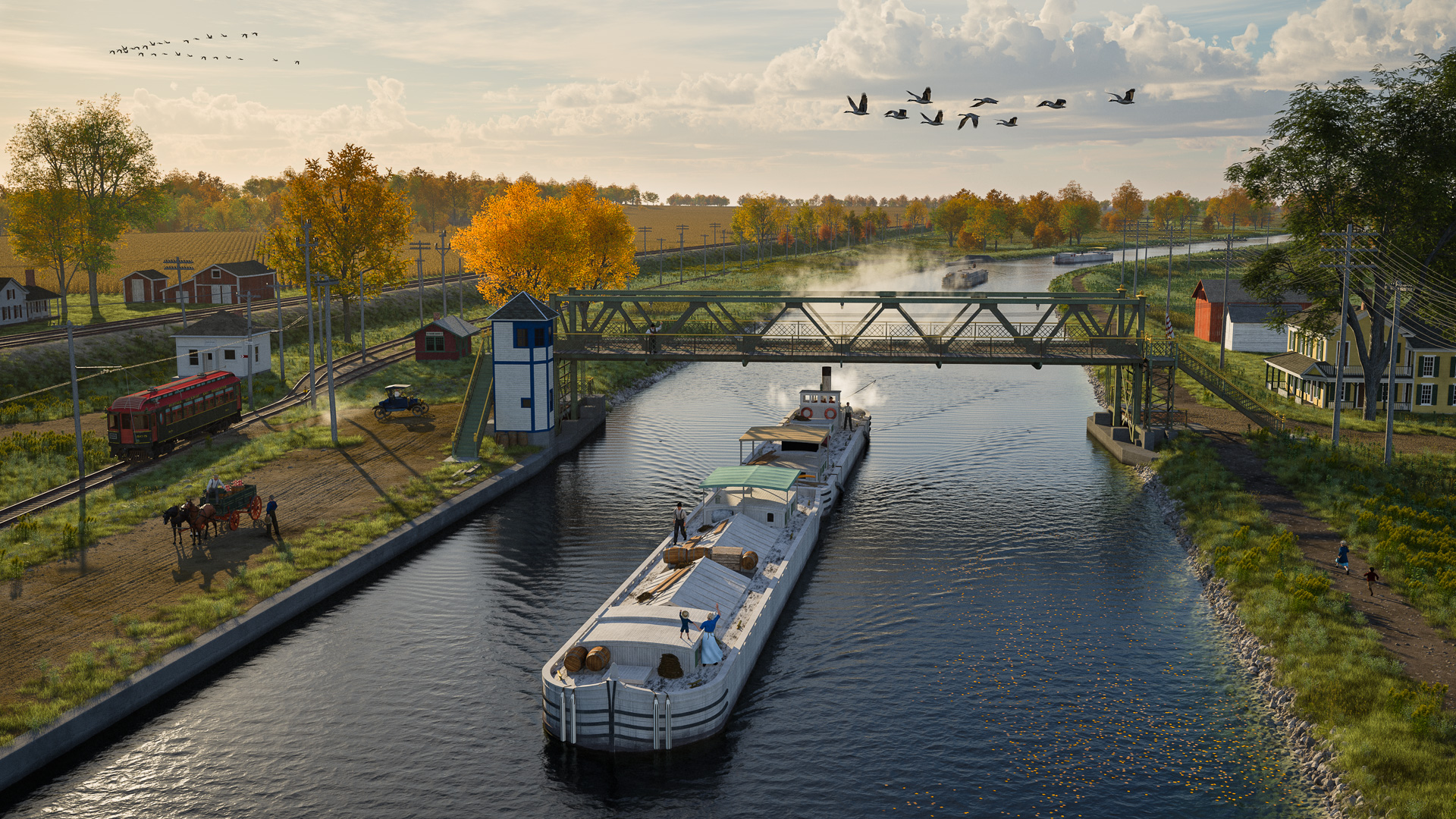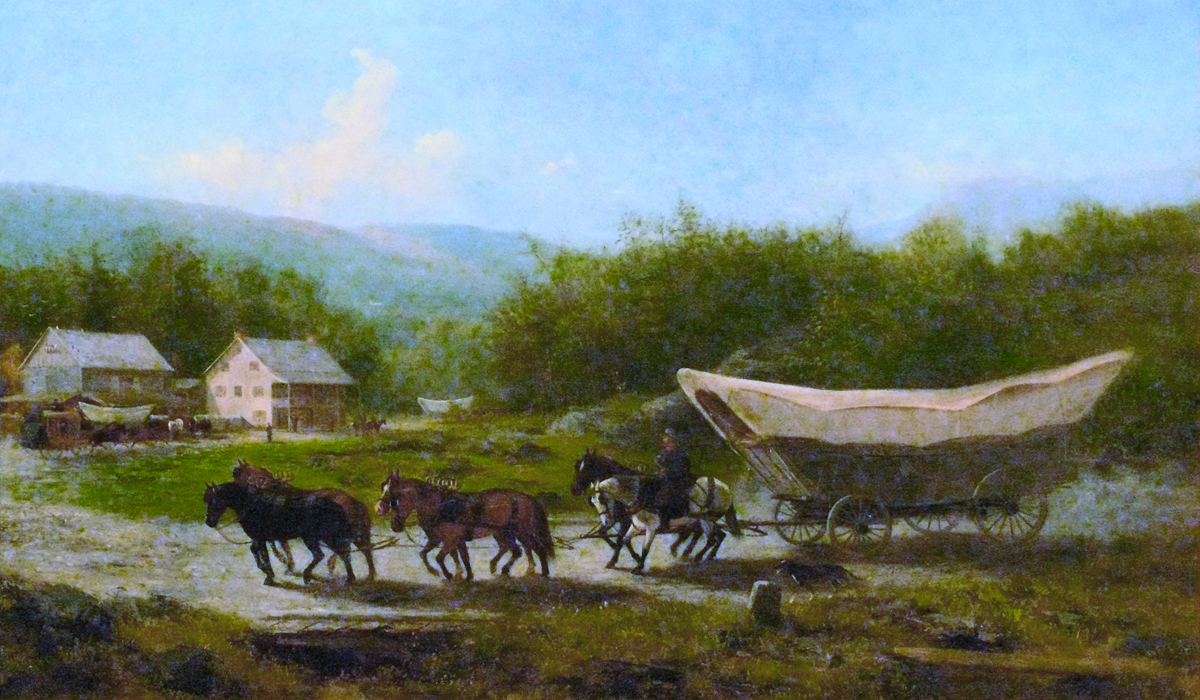
The Erie Canal was built across an early American landscape increasingly crisscrossed by turnpike roads.
The rough, privately built highways threaded their way through narrow valleys as they made their way into the interior of New York and Pennsylvania. Gradually, they enabled trade between far-flung frontier settlements and the port cities of the east coast.
In New York state, the public “readily subscribed for building turnpikes. . . . Good roads increased the flow of emigrants,” wrote Rufus Grider in a lecture that he presented before the Herkimer County Historical Society in 1897. “The great wagons now became larger and more numerous; 4, 5, 6, 7, 8, and teams with 9 horses traveled on the Mohawk turnpike. The teams ‘were continuous.’”
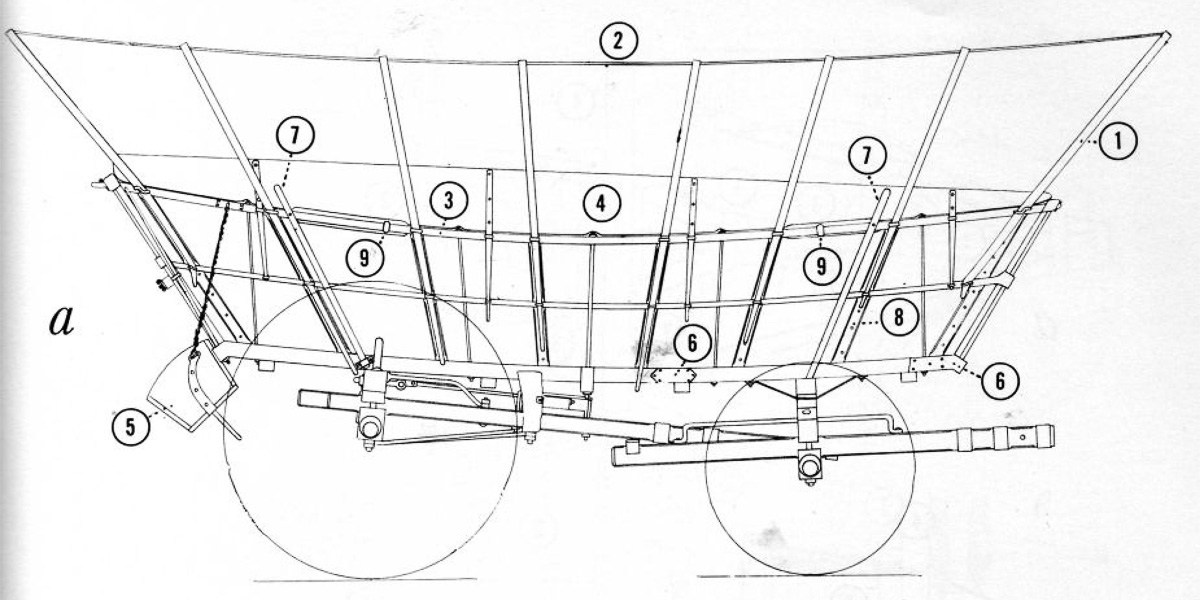
The great wagons were Conestoga wagons, also known as Pennsylvania wagons. They were immense freight carriers, up to 18 feet long, 12 feet high and pulled by teams of large draft horses. A fabric cover, stretched over wooden bows set at rakish angles, extended poke-bonnet style over the front and rear of the bed. This protected the cargo from inclement weather and gave the Conestoga its distinctive profile.
That profile was enhanced by the graceful, boat-shaped curve of the wagon bed, which swept up to terminate at a jaunty angle over the rear wheels. The curved shape was functional because it caused loose freight to shift to the center of the bed when the wagon encountered steep or rough terrain.
The Conestogas are often confused with the prairie schooners that, later in the 19th century, carried settlers across the Great Plains. For the most part, those were farm wagons outfitted with canvas covers. The Conestoga was a heavy-duty freight carrier that originated in Pennsylvania in the mid-18th century. It could carry six to eight tons of cargo — or more. It was the semi-truck of the pre-canal era.
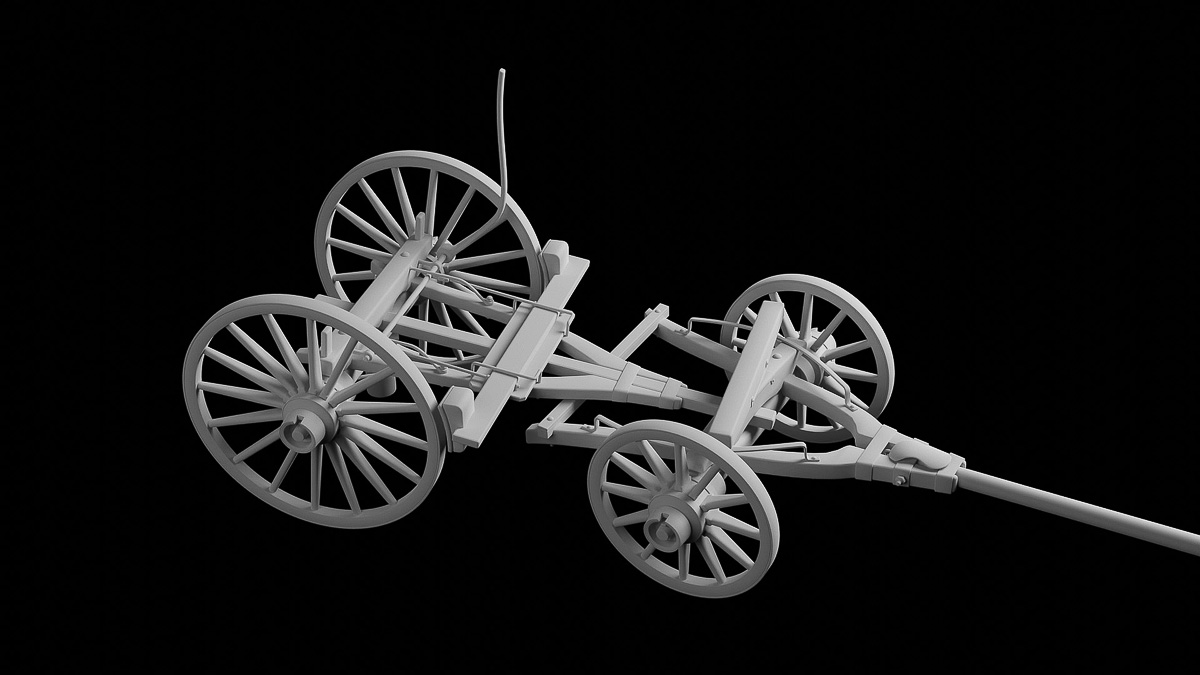
A few weeks ago I came across detailed plans of a Conestoga wagon published in Bulletin 218 of the United States National Museum in 1959. The drawings accompanied “Conestoga Wagons in Braddock’s Campaign, 1755,” a paper by Don H. Berkebile that described the wagons’ role in the failed British campaign to Fort Duquesne (now Pittsburgh) during the French and Indian War.
I’m fascinated by the technology of that period and wanted to understand how these sturdy freight-carriers were put together. What better way to do that than to build a digital model?
The wagons were not mass produced, of course. They were made to order by local carpenters and blacksmiths. Though they followed the same pattern, each wagon was unique.
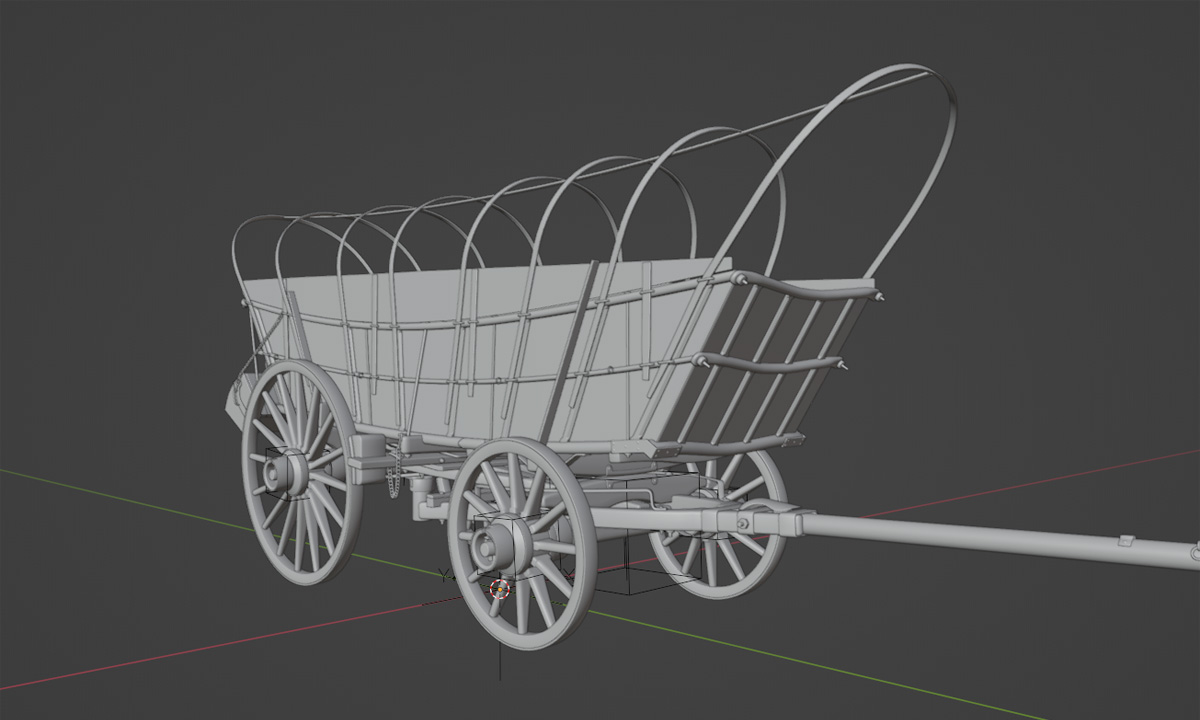
The wagon maker’s trade “was governed by tradition and he took pride in his work,” wrote John Omwake in Conestoga Six-Horse Bell Teams of Eastern Pennsylvania. “Each mortise was a tight fit; corners which added weight and not strength were pared down and beveled; one piece was exactly like its counterpart on the other side of the wagon; although spokes were fashioned from split pieces by hand there was no apparent difference between them; where two pieces came together, the fit was perfect and the curves symmetrical. This careful workmanship had much to do with the admiration the wagon received when it rolled down the road with the eyes of the world upon it.”
Omwake’s little book, self-published in 1930 for private distribution, appears to be the most authoritative account that we have of these impressive vehicles. It is packed with anecdotes and interesting information, particularly about how the wagons were built.

For example, the passage describing the process of building the wagon wheels goes on for several pages, ending with the fitting of the iron tire:
“Then came the great day when the tire was laid out flat on iron or stone supports and a fire built around it until it was quite hot (hot enough to char wood); then it was lifted on to the wheel lying horizontally upon a buck, and quickly driven over the felloe [rim] and as quickly quenched with pouring water. Cooling was completed in a cooling trough, in which the wheel hung and revolved. All the neighborhood would come to watch the shrinking of the tire, for the flames and smoke, the hurrying of hammering, the volumes of hissing steam, were a fine sight.”
The harnesses for many wagons included small racks of bells mounted above each horse’s head. (Which must have given a distinctive sound to their approach.) When a driver came to grief and required help from a passing wagon, his rescuer traditionally received payment in the form of these bells. “I’ll be there with bells on” was another way to say you would be arriving at your destination from a successful trip.
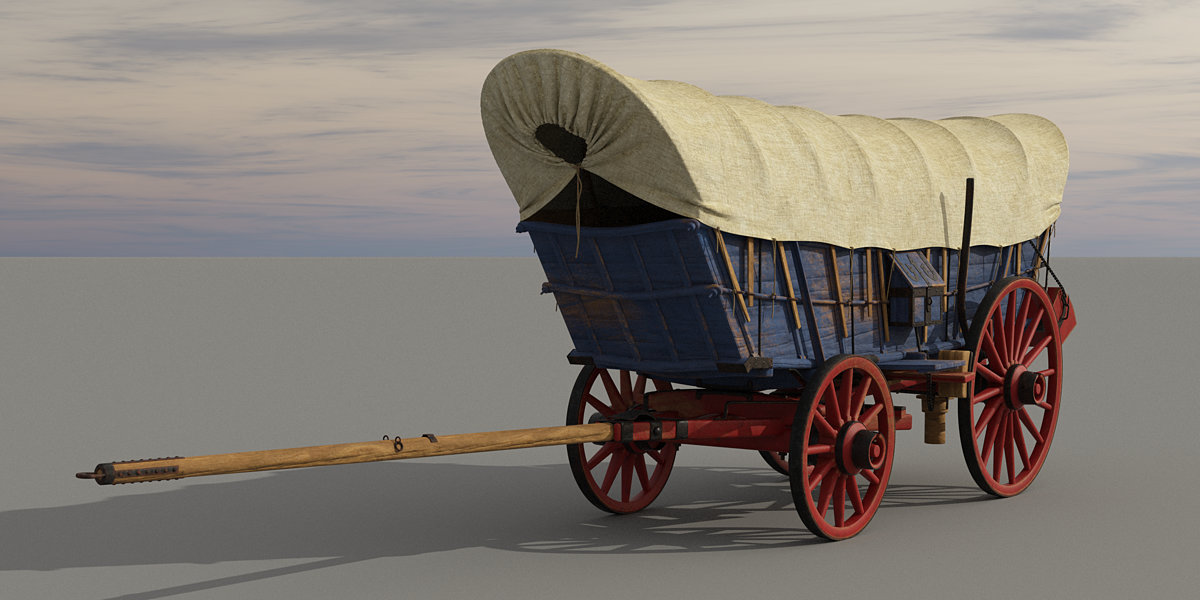
The Conestoga had no front seat for the driver. Instead, he walked alongside or rode the left wheel horse, as shown in the painting at the top of this post. A “lazy board” attached to the left side of the bed provided an extra seat. Sometimes hitchhikers would be allowed to ride along here, provided they minded the brake handle when called upon.
Because the driver rode on the left side, he passed oncoming vehicles to the right. Several sources mention that this is why, today in the U.S., we drive on the right side of the road.
I have no immediate use for the model, but it may eventually find its way into an Erie Canal scene — along with a six-horse team with bells on.
